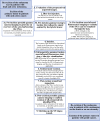(Near-Infrared) Fluorescence-Guided Surgery Under Ambient Light Conditions: A Next Step to Embedment of the Technology in Clinical Routine
- PMID: 27020586
- PMCID: PMC4927603
- DOI: 10.1245/s10434-016-5186-3
(Near-Infrared) Fluorescence-Guided Surgery Under Ambient Light Conditions: A Next Step to Embedment of the Technology in Clinical Routine
Abstract
Background and purpose: In open surgery procedures, after temporarily dimming the lights in the operation theatre, the Photo Dynamic Eye (PDE) fluorescence camera has, amongst others, been used for fluorescence-guided sentinel node (SN) biopsy procedures. To improve the clinical utility and logistics of fluorescence-guided surgery, we developed and evaluated a prototype modified PDE (m-PDE) fluorescence camera system.
Methods: The m-PDE works under ambient light conditions and includes a white light mode and a pseudo-green-colored fluorescence mode (including a gray-scaled anatomical background). Twenty-seven patients scheduled for SN biopsy for (head and neck) melanoma (n = 16), oral cavity (n = 6), or penile (n = 5) cancer were included. The number and location of SNs were determined following an indocyanine green-(99m)Tc-nanocolloid injection and preoperative imaging. Intraoperatively, fluorescence guidance was used to visualize the SNs. The m-PDE and conventional PDE were compared head-to-head in a phantom study, and in seven patients. In the remaining 20 patients, only the m-PDE was evaluated.
Results: Phantom study: The m-PDE was superior over the conventional PDE, with a detection sensitivity of 1.20 × 10(-11) M (vs. 3.08 × 10(-9) M) ICG in human serum albumin. In the head-to-head clinical comparison (n = 7), the m-PDE was also superior: (i) SN visualization: 100 versus 81.4 %; (ii) transcutaneous SN visualization: 40.7 versus 22.2 %; and (iii) lymphatic duct visualization: 7.4 versus 0 %. Findings were further underlined in the 20 additionally included patients.
Conclusion: The m-PDE enhanced fluorescence imaging properties compared with its predecessor, and provides a next step towards routine integration of real-time fluorescence guidance in open surgery.
Figures



References
-
- Mieog JS, Troyan SL, Hutteman M, Donohoe KJ, van der Vorst JR, Stockdale A, et al. Toward optimization of imaging system and lymphatic tracer for near-infrared fluorescent sentinel lymph node mapping in breast cancer. Ann Surg Oncol. 2011;18(9):2483–2491. doi: 10.1245/s10434-011-1566-x. - DOI - PMC - PubMed
-
- Kusano M, Kokudo N, Toi M, Kaibori M (eds). ICG fluorescence imaging and navigation surgery. New York: Springer; 2016.
Publication types
MeSH terms
Substances
LinkOut - more resources
Full Text Sources
Other Literature Sources
Medical

